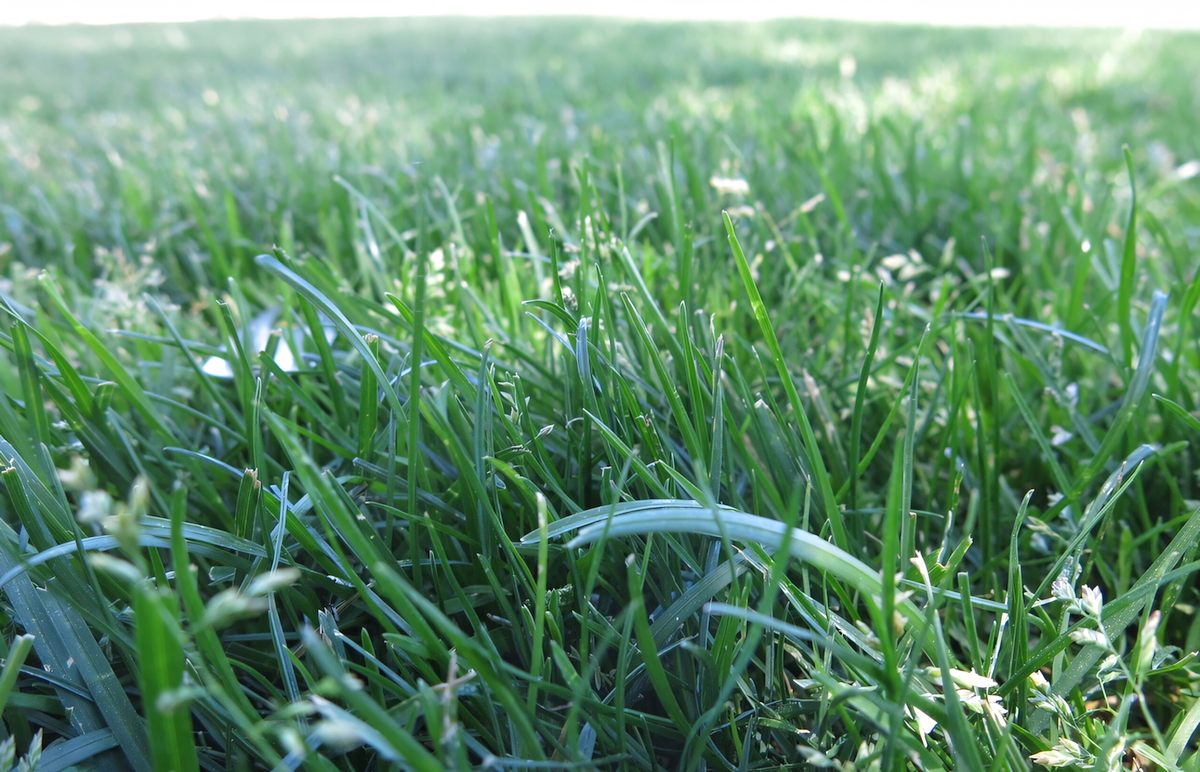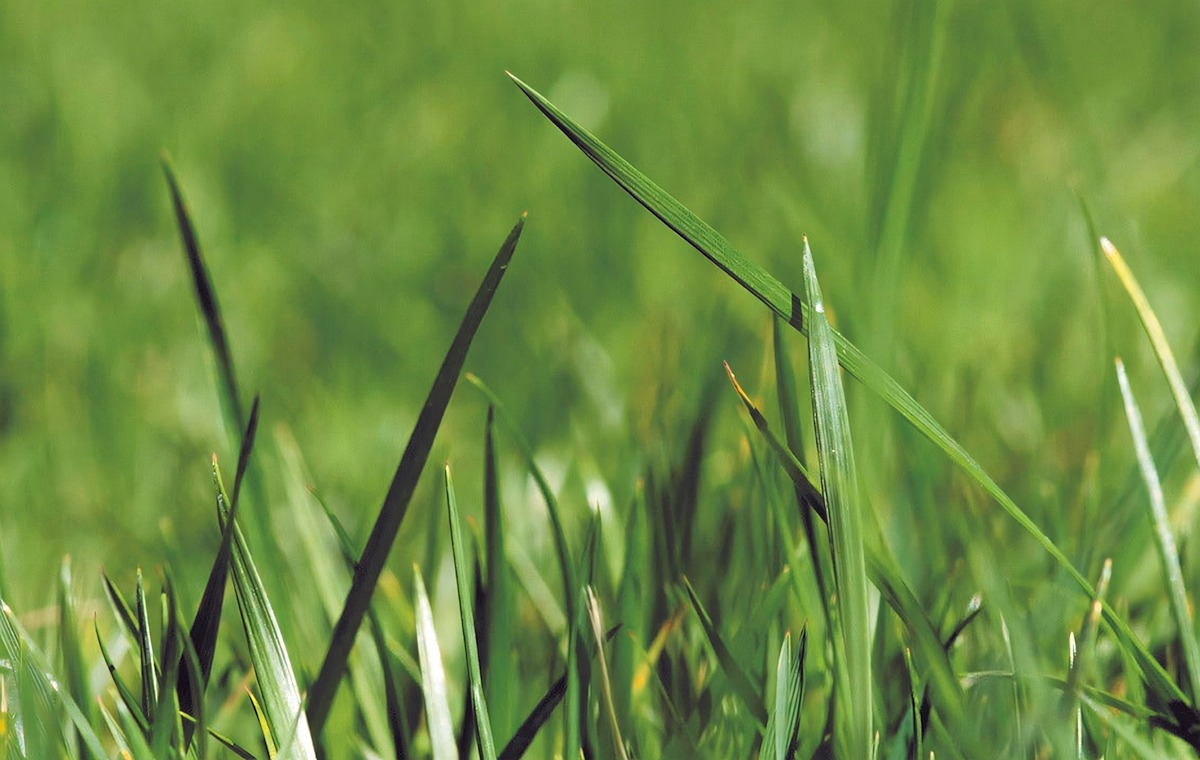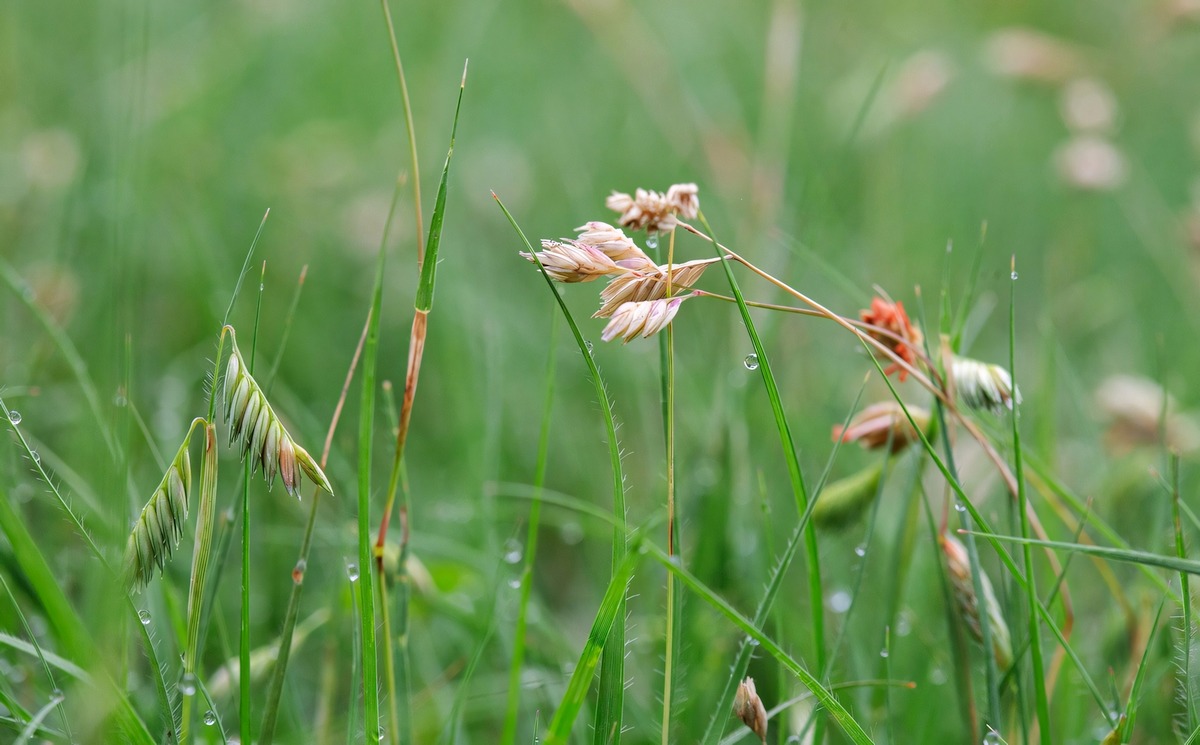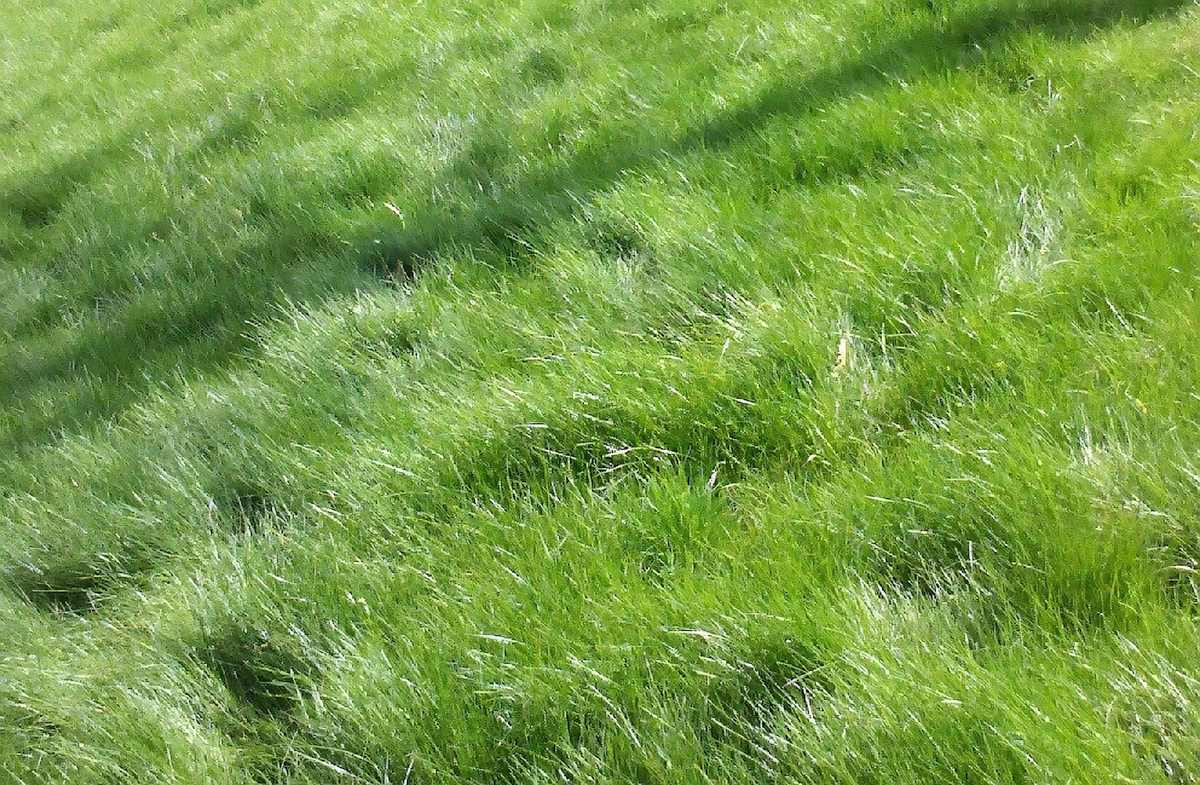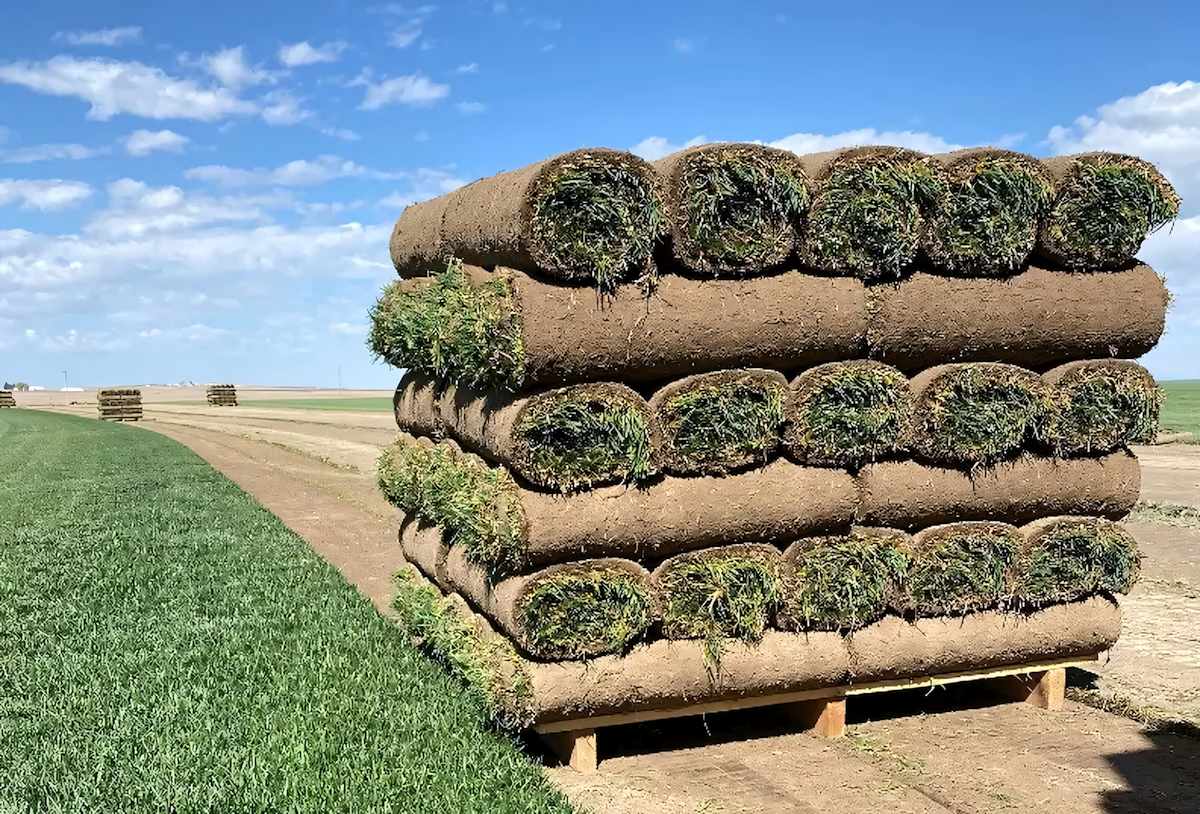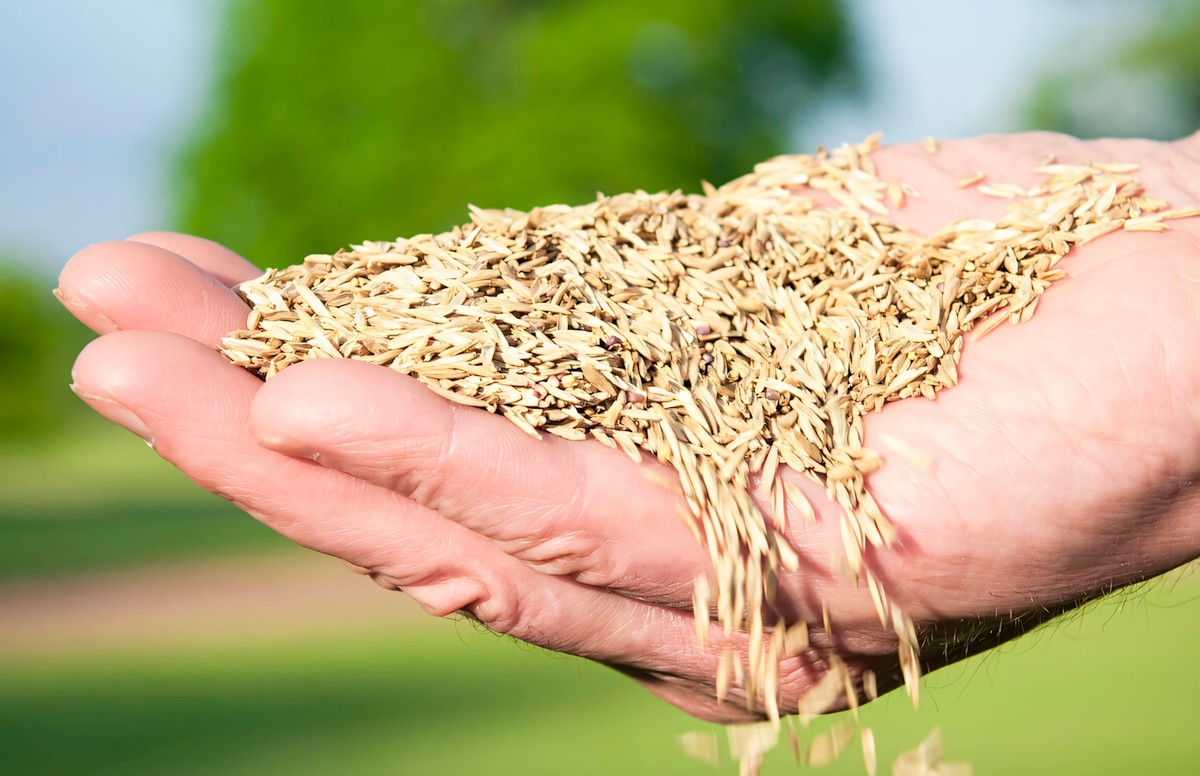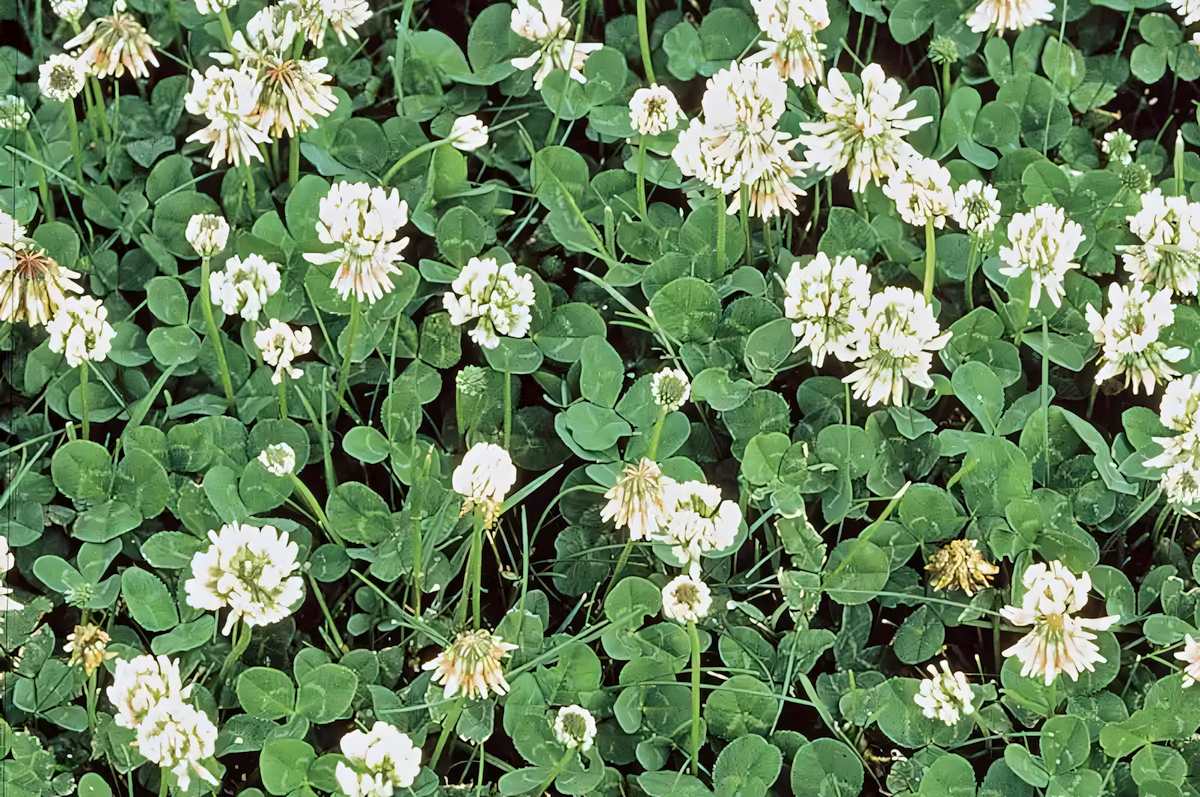Utah’s mountains, plateaus, and deserts provide a variety of different climate types in Utah—which means that no one grass seed stands out as the leading choice for a new lawn.
From the arid parts to the cooler and more humid part of the state, a variety of soil and yard conditions also make establishing and maintaining a superb lawn challenging.
Your choice of the best grass seed will determine just how challenging it is to produce a healthy, low-maintenance lawn for your yard.
So, let’s get straight into the main choices…
What’s the Best Grass Seed for Utah?
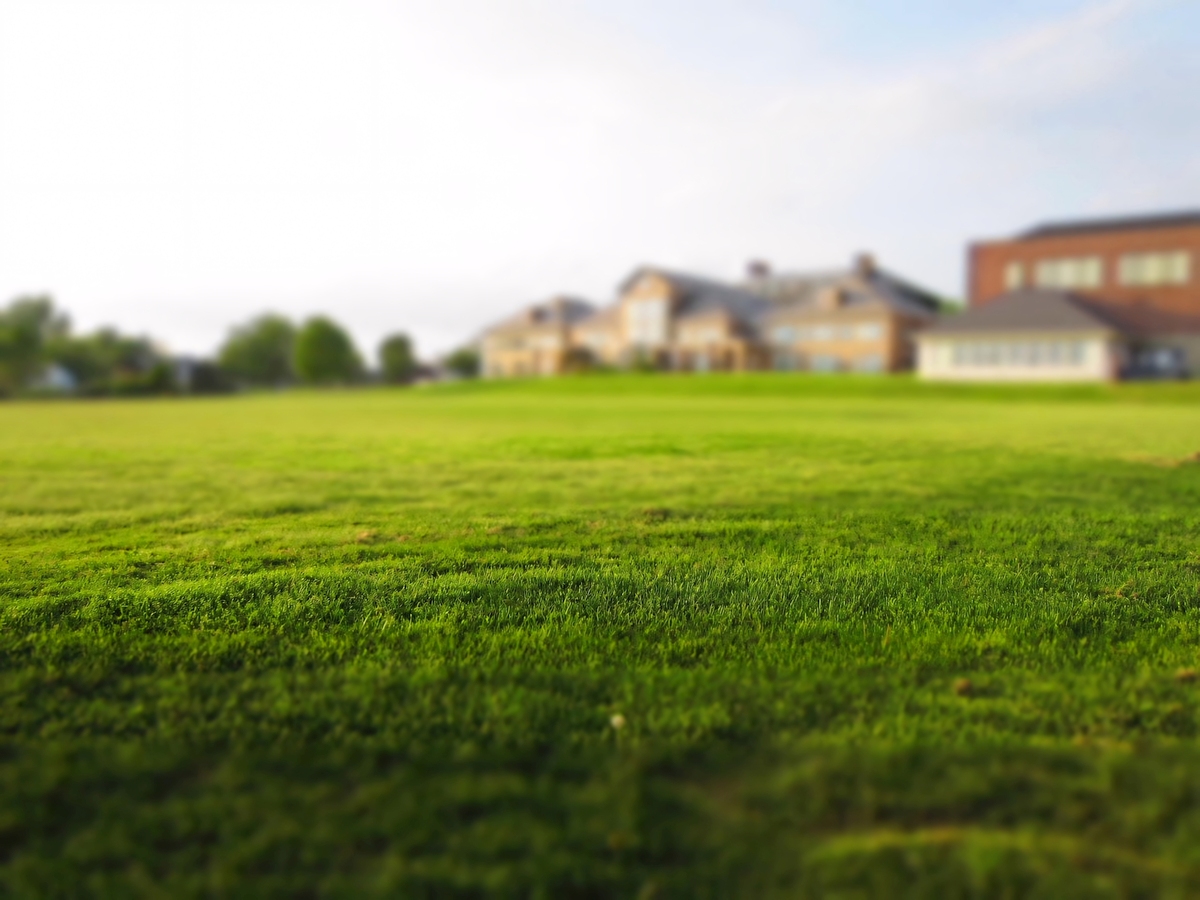
The best grass seed for Utah is Kentucky Bluegrass, Fine Fescue or Perennial Ryegrass. You may also want to consider Tall Fescue or Buffalo grass. These grasses are generally well suited to the conditions in most of Utah—but some are more drought-tolerant and require less maintenance than others.
But Wait! The Best Grass for Utah Might Not Be Real Grass!
There are good reasons why you’re seeing more artificial grass in Utah. From professional sports fields to finely landscaped backyard lawns, artificial turf removes the difficulties of keeping real grass healthy and the expense of maintaining it.
In recent years, higher-quality synthetic turf has become available for homes and businesses, opening up many more possibilities for homeowners looking for low-maintenance, grass alternatives in Utah.
We’ve helped thousands of homeowners in the southwest of the U.S. make the switch and discover the benefits of artificial grass in the past two decades—like this one:
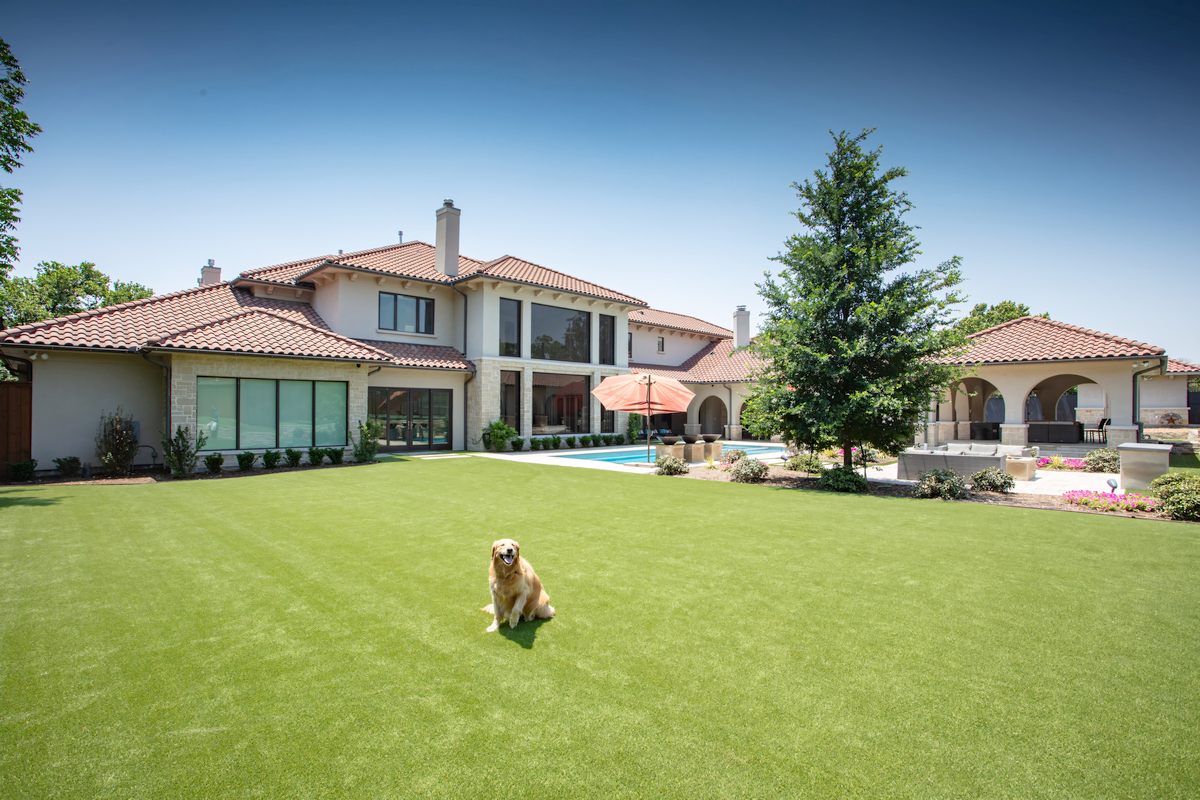
There’s more about synthetic grass later but, first, let’s find out more about the best real grass choices in Utah…
GET A FREE ARTIFICIAL GRASS ESTIMATE IN UTAH
If you’re in Salt Lake City or the surrounding areas, the experienced team at Rocky Mountain Turf will break down the costs for you in a free estimate. Contact us here.
Understanding How Utah’s Climate Affects Grass Choice
The variations in Utah’s climate create multiple challenges for homeowners and their lawns.
Utah has three main climatic regions, with each region covering about one-third of the state:
- A humid climate in the high mountains and plateaus
- An arid climate in the lower basins, valleys, and flatlands
- A sub-humid or semi-arid climate in the other areas of the state
This only tells half the story, though. With temperature extremes common in summer and winter almost anywhere in the state—at both ends of the scale—and water shortages common, several major risks are posed for healthy grass: excessive cold, excessive heat, and drought.
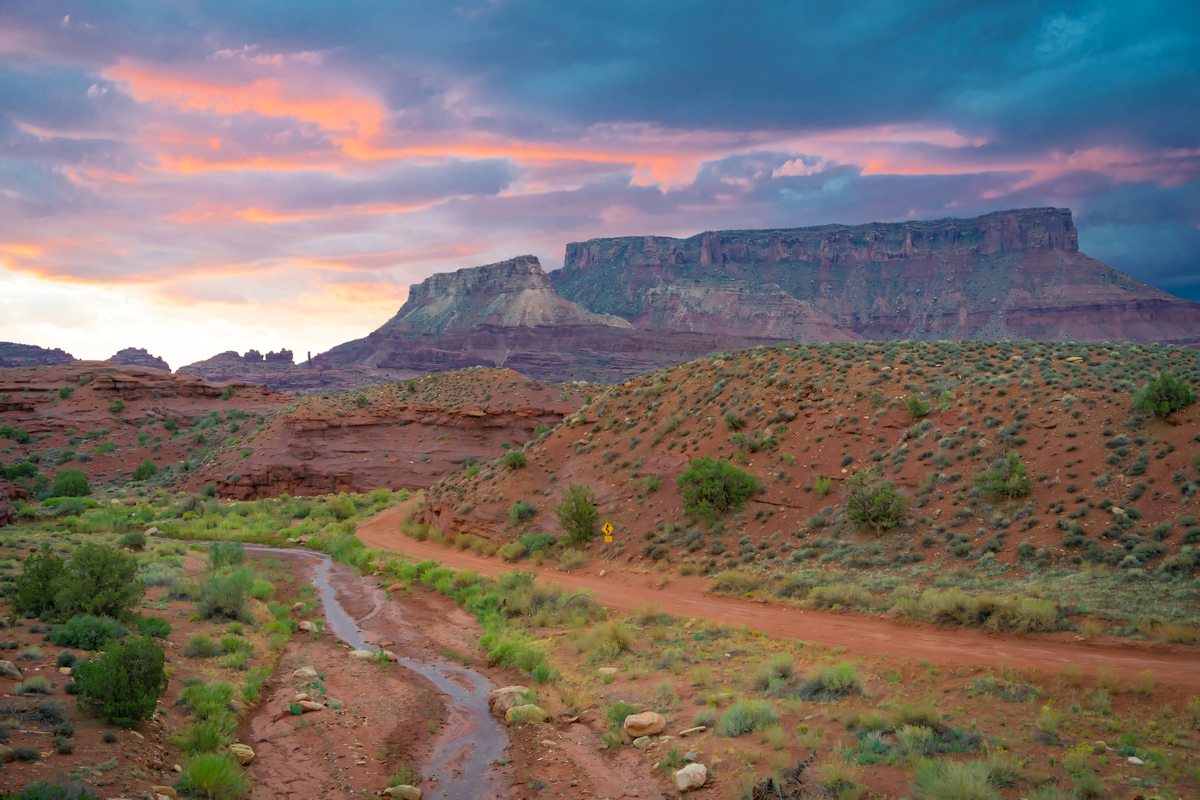
All grass needs enough sunshine and water to grow but some types have adapted more to a lack of water and are more drought-tolerant. For the many arid regions of Utah, this is particularly important. Utah, after all, is the second driest state in the country.
Other grass types flourish in a tight temperature range while some grasses are more tolerant of a broad range.
When we add the possibility of poor-quality, alkaline, clay-heavy soil conditions, many homeowners understandably deliberate long and hard over the type of grass seed they choose.
What Other Factors Affect the Best Lawn Grass Choice in Utah?
Besides the local climate in your location, consider the following factors when choosing the best grass for Utah:
The Purpose of the Lawn
Some homeowners simply want a picture postcard lawn. Others want a play area for the kids, a dog run, an entertainment area or a firepit.

The level of foot traffic on your lawn will affect the type of grass seed you choose—some grass types handle heavy foot traffic and bounce back after damage better than others.
How Shaded the Yard Area is
Some grass types need at least 5-6 hours of sunshine a day while others can flourish with just 3-5 hours. If your yard has large shade trees that block sunlight or tall buildings around it, you’ll need to choose a more shade-tolerant grass for a lawn to flourish.
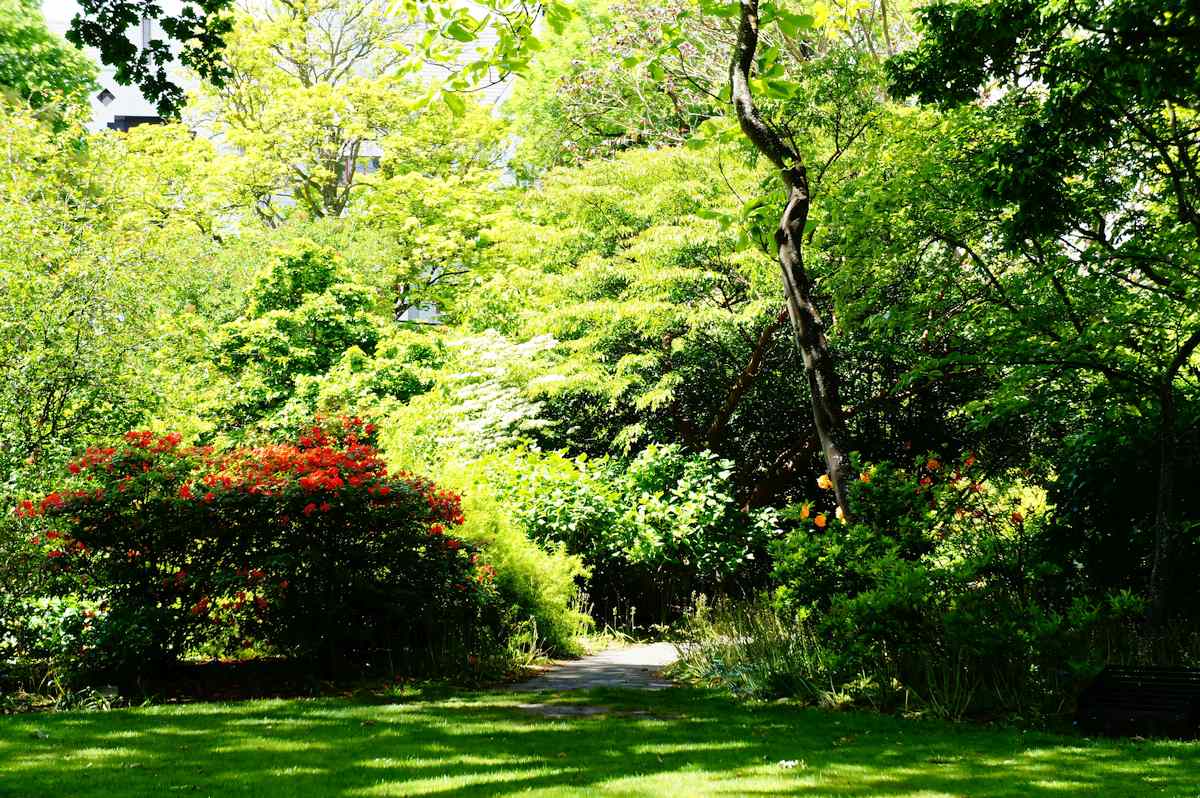
Local Soil Conditions
What are the soil conditions in your backyard? Testing the soil quality is recommended if you’re serious about a picture-postcard lawn. Then you can choose a grass that will grow healthily in it—or add sufficient quantities of the right nutrients to help it. Some grasses can thrive in the type of alkaline, clay, and sand-based soils that abound in Utah—while others struggle.
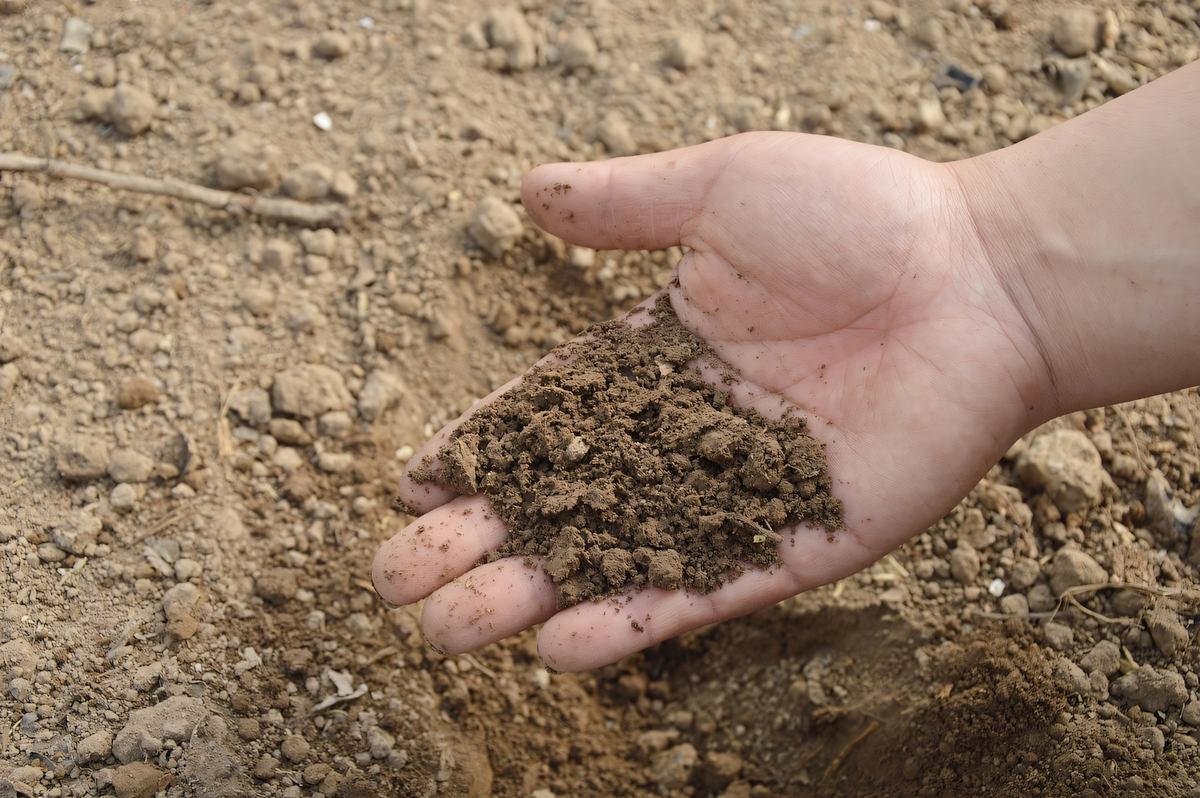
Appetite for Maintenance
If you want a lawn that needs little work, you’ll need a low-maintenance grass that is naturally well-suited to the conditions. That will save you hours of mowing, fertilizing, aerating, weeding, and other yard work.
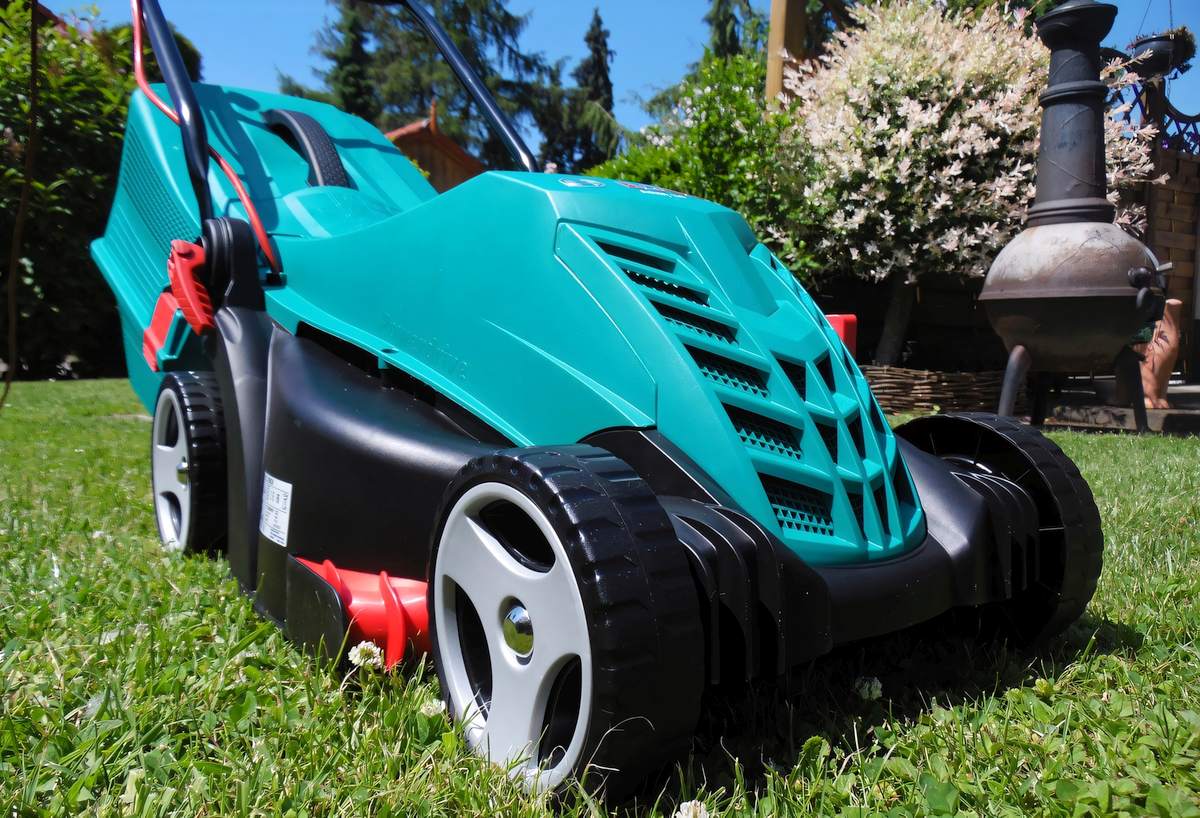
The Best Grass Seed Options in Utah: A Closer Look
Whether you’re reseeding your lawn or just starting out, five main grass types can be considered the best grass seed for Utah lawns. They are mainly cool-season grasses.
Let’s run through them in more detail…
Kentucky Bluegrass
Kentucky bluegrass brings a thick, lush, verdant lawn appearance, tolerates the cold well, and repairs itself quickly after heavy foot traffic—so it’s suitable for the family, including pets. It’s also well adapted to the Utah soils and is usually available in blends with Fine Fescue and Perennial Ryegrass.
On the downside, you will need to look after this type of grass and water it well for it to thrive. It’s also not great in shade and may need pest treatment to keep it healthy.
Seed your lawn with Kentucky Bluegrass in late summer or early fall in Utah.
Perennial Ryegrass
Perennial Ryegrass is versatile and easy to establish, with quick germination. It is excellent for high-traffic areas and looks fantastic on lawns with its bright hue. Perennial Ryegrass is highly disease- and pest-tolerant and usually grows well in Utah soils. You’ll often see it used for overseeding a Kentucky Bluegrass lawn.
On the downside, Perennial Ryegrass requires consistent maintenance (because it grows quickly) and lots of water to remain healthy. It also struggles in extreme heat.
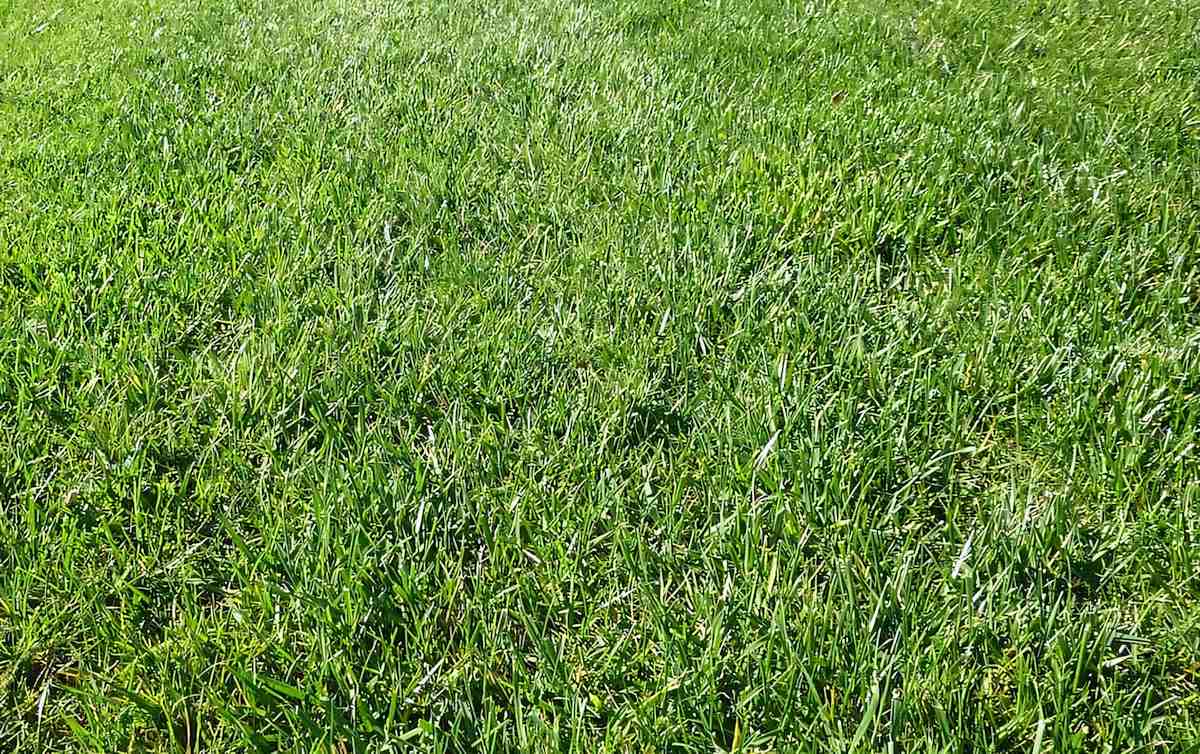
Seed your lawn with Perennial Ryegrass between early September and mid-October or March to early May in Utah.
Tall Fescue
Tall Fescue is highly drought-tolerant and heat-tolerant, with deep roots. It also thrives in various soil types and is highly disease- and pest-resistant. These qualities make it suitable for many lowland areas of Utah, especially if you’re looking for a low-maintenance option.
On the downside, Tall Fescue has a coarser texture than other lawn grasses mentioned here, which may discourage some homeowners. However, it can be mixed with Fine Fescue. Heavily shaded yards are not well-suited to Tall Fescue lawns either.
Seed your lawn with Tall Fescue in late summer or early fall, between mid-August and mid-October.
Buffalo Grass
Buffalo Grass is extremely drought-tolerant, disease-resistant, and low-maintenance because of its slow growth, offering a very eco-friendly lawn solution for Utah homeowners. Native to Utah and the Great Plains, Buffalo Grass is a warm-season grass that is better suited to the warmer, southern areas of the state.
On the downside, Buffalo Grass is slower to establish than other options, prefers full sun to partial sun or shade, and does not handle foot traffic, heavy rainfall or sandy soils very well. Establishing a Buffalo Grass lawn can also be more challenging than with other grass types.
Seed your lawn with Buffalo Grass in early summer for the warmer temperatures.
Fine Fescue
Fine fescue is an excellent choice of grass seed if your yard is heavily shaded or only partly sunny. As well as being shade-tolerant, Fine Fescue is drought-resistant, requires little water, and usually grows well in poor-quality Utah soils with little fertilizer or other maintenance. You’ll often see Fine fescue used in combination with other grass types in Utah, such as Kentucky Bluegrass.
On the downside, its soft texture and thin, needle-like blades provide a weak structure and make Fine Fescue unsuitable for high-traffic areas.
Seed your lawn with Fine Fescue in the fall, between early September and mid-October.
Seed Or Sod in Utah?
With some grasses like Tall Fescue, you may not have a choice of seed or sod as sod is not sold at Utah sod forms. However, other grasses are readily available in seed or sod form. Your decision will come down to:
- The local climate, soil, and shade conditions in your yard
- How patient you are to get your new lawn up and running
- How much work you are prepared to put into establishing a new lawn
- Your budget
- Availability in your local area
Tips for Planting Seed and Maintaining Grass in Utah
You need to plant grass seed at the right time of year to establish your lawn and do at least some work to maintain it.
Here are a few tips:
- Plant the grass seed at the right time of year to match the temperature requirements of the grass type
- Prepare the soil by removing rock and debris from it
- Aerate the soil to reduce compaction
- Test and amend the pH/nutrient levels with compost if required
- Lightly rake the grass seed across the lawn area
- Water the seed after planting it and continue to water lightly and frequently afterward to keep the soil moist
- Avoid fertilizing newly planted grass seed for a few weeks at least
- Aerate the lawn as it establishes
- Follow best-practice watering guidelines after your lawn is established—with deep but infrequent watering generally well-suited for most grass types
Want a Grass Alternative for Your Utah Lawn?
Let’s take a look at two popular grass alternatives in Utah: artificial grass and a type of clover.
Artificial Grass
A high-quality artificial grass lawn should last 15-20 years. Synthetic grass looks just like the real thing and, properly installed, drains well. It has several advantages over real grass:
- No cutting, fertilizers, pesticides, aeration, weedkillers—only basic maintenance is required for artificial grass.
- Frees up time and resources for homeowners
- Saves money compared with real grass after about year five.
- Naturally resistant to drought, shade, pests, etc.
- No digging, mud, bald or yellow patches due to pets
Artificial grass works well alongside hardscaping materials like gravel, crushed rock or pavers and organic options, such as mulch and native Utah plants.
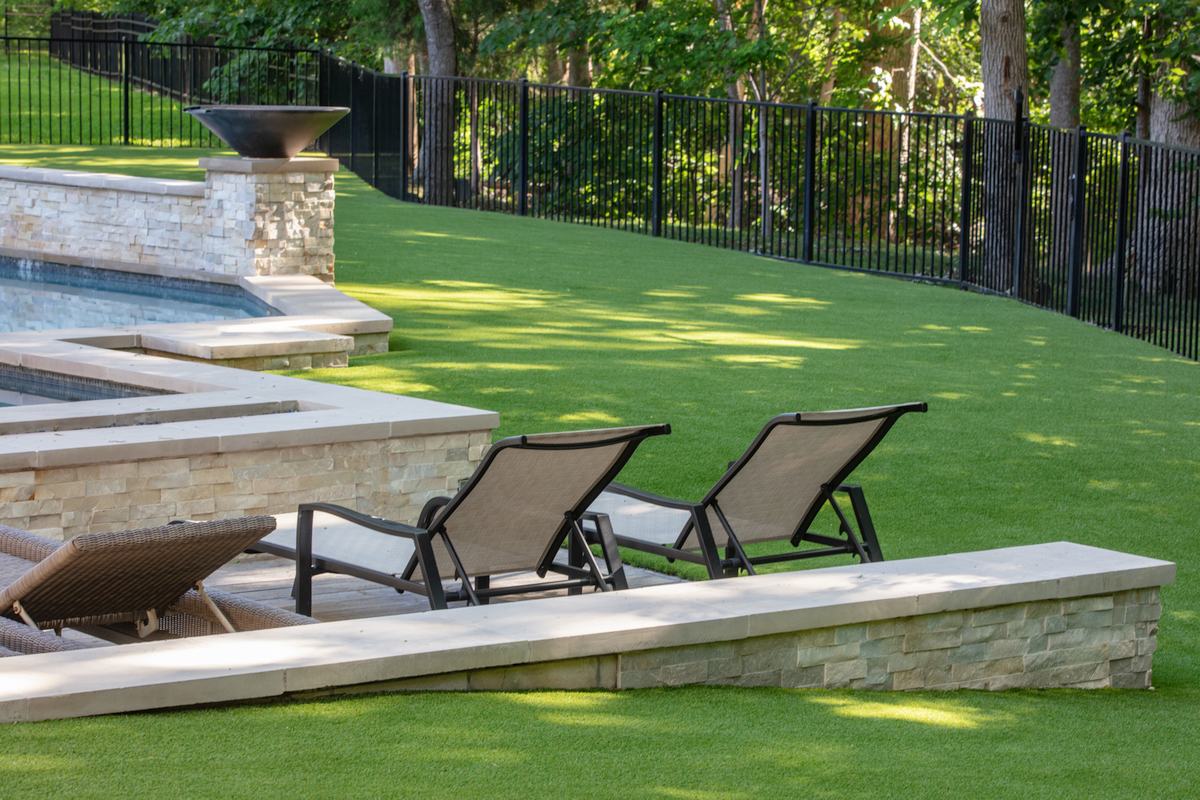
White Dutch Clover
Another viable alternative to grass seed in Utah is a lawn of White Dutch Clover. This will survive all year and provide a low-maintenance, green ground cover without the work or cost that goes into a grass lawn.
White Dutch Clover is hardy enough to be planted anywhere in Utah. It is highly adaptable and can grow in almost any type of soil, as well as in full sun or shade with little watering.
FAQs
Can I grow a Bermuda grass lawn in Utah?
Bermuda Grass is a warm-season grass that struggles in Utah’s winter temperatures and at other times of year in the north of the state. If you can get Bermuda Grass to grow, it’s high maintenance but has a lush appearance and withstands foot traffic well. Most homeowners in Utah likely have better alternatives.
What are the main differences between real grass and artificial grass?
They may look almost identical these days, but real grass and synthetic grass have many differences. To help decide which is the best option for your home, check out this post that compares artificial grass vs natural grass.
How long does artificial grass last?
Your artificial grass should last a minimum of 10 years and if properly installed and maintained, up to 15 or 20 years.
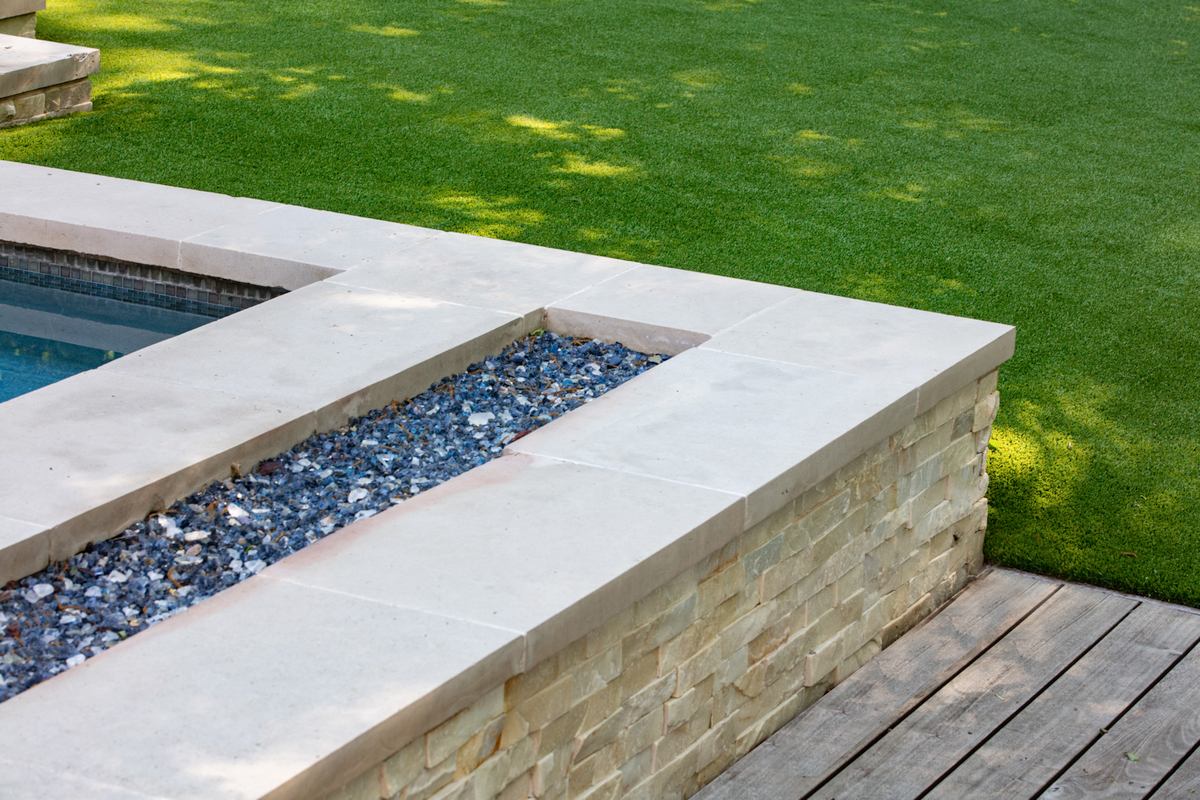
Considering the Switch to Artificial Grass?
If you’re considering alternatives to a grass lawn for your Utah home, discuss your options with an artificial grass professional.







